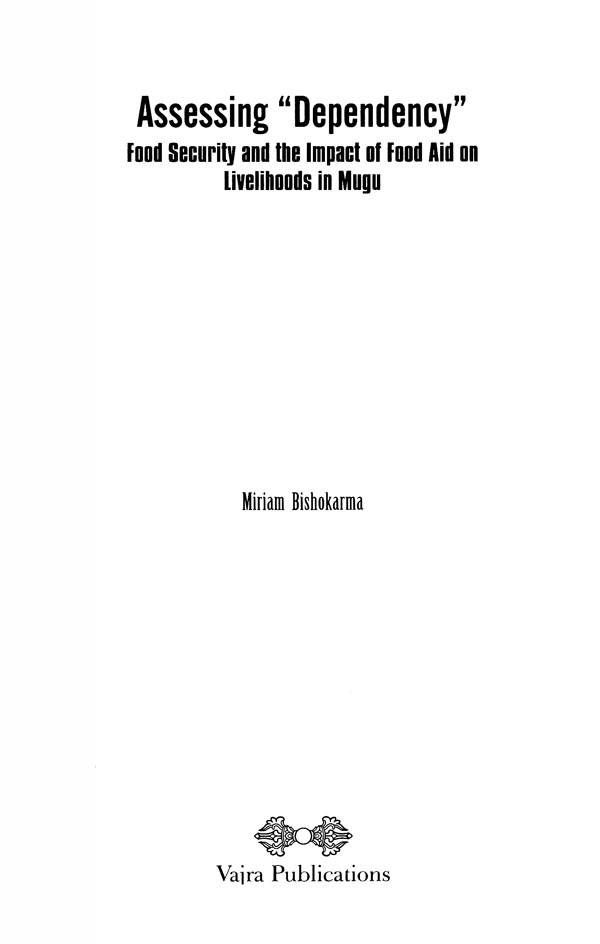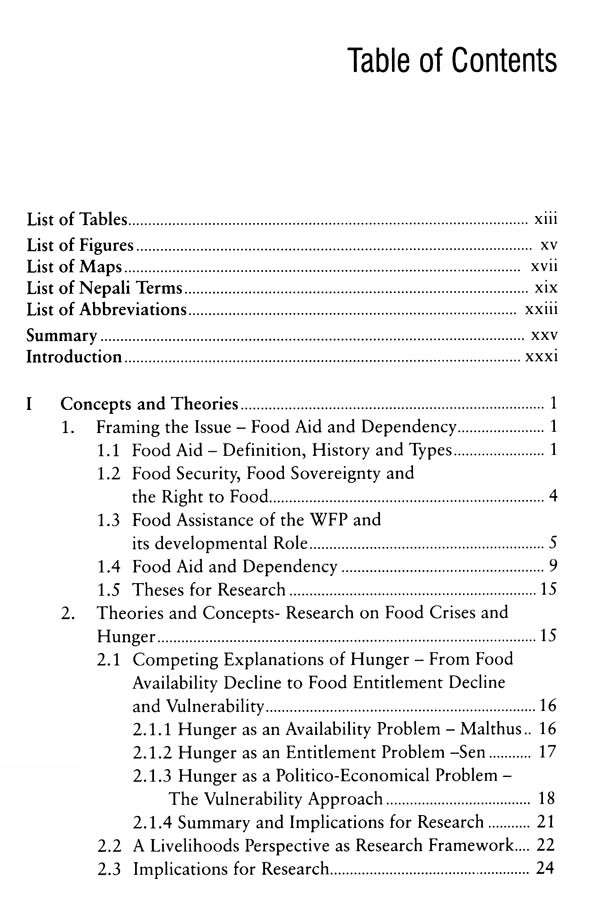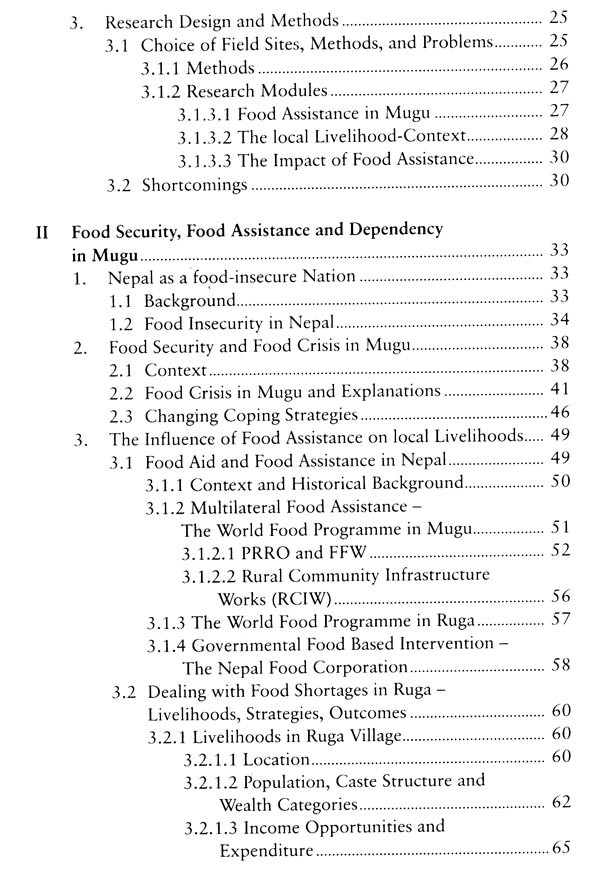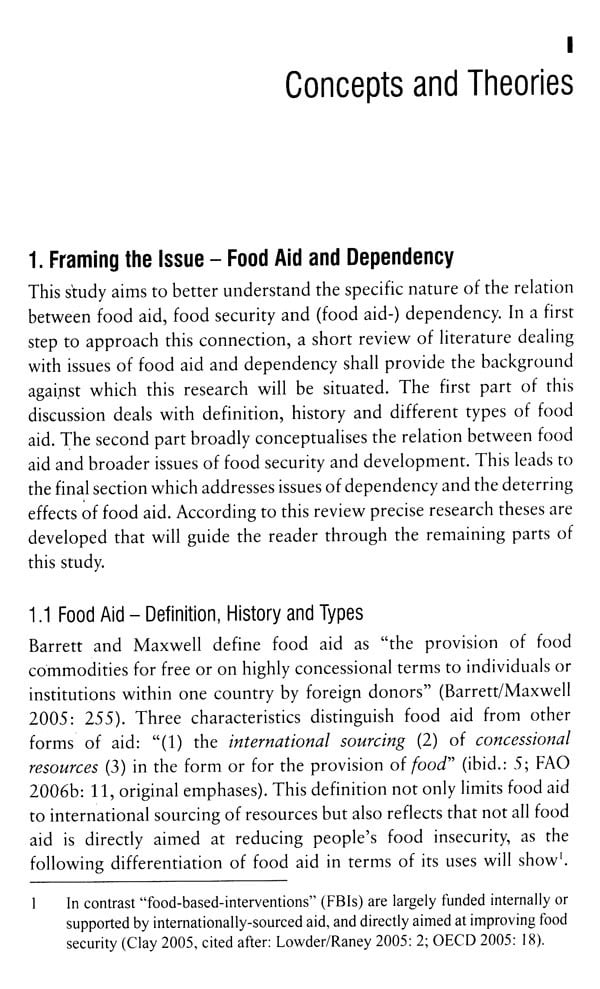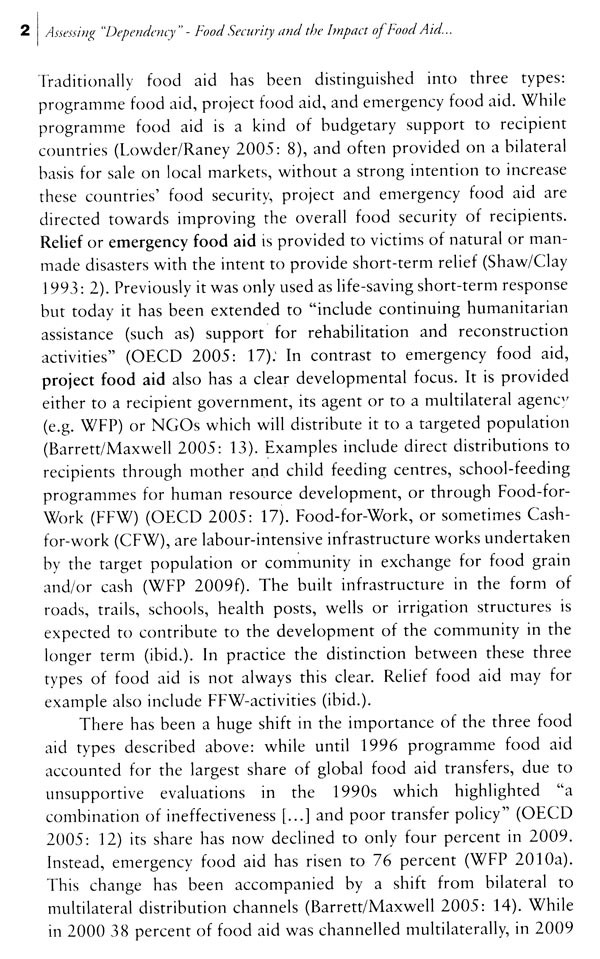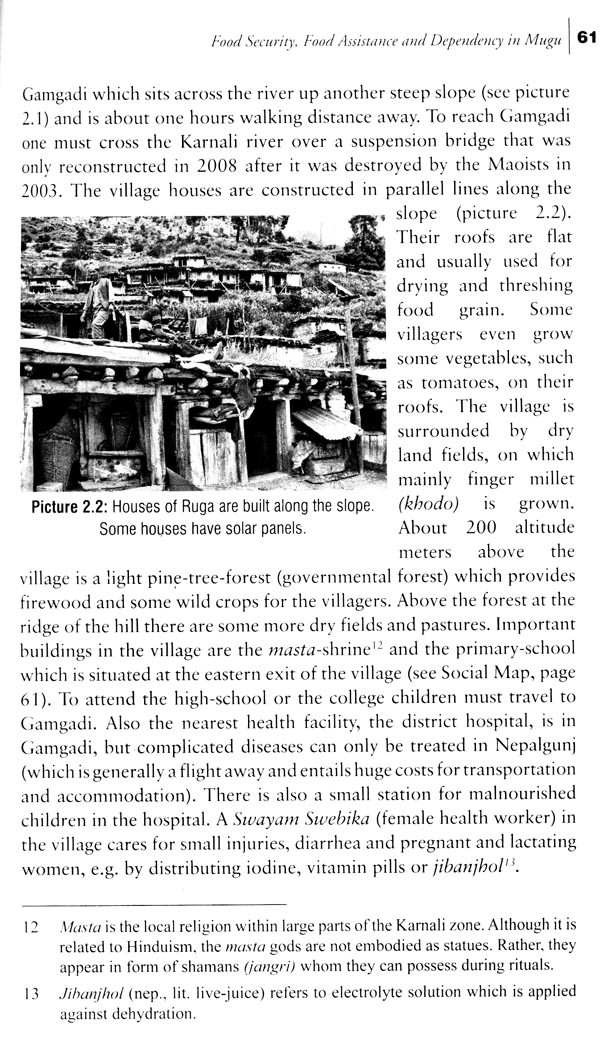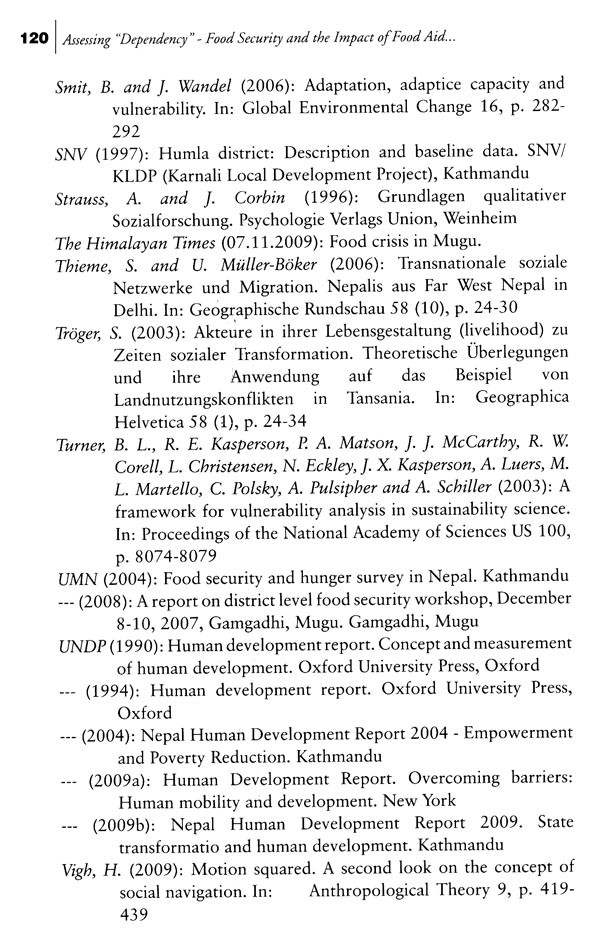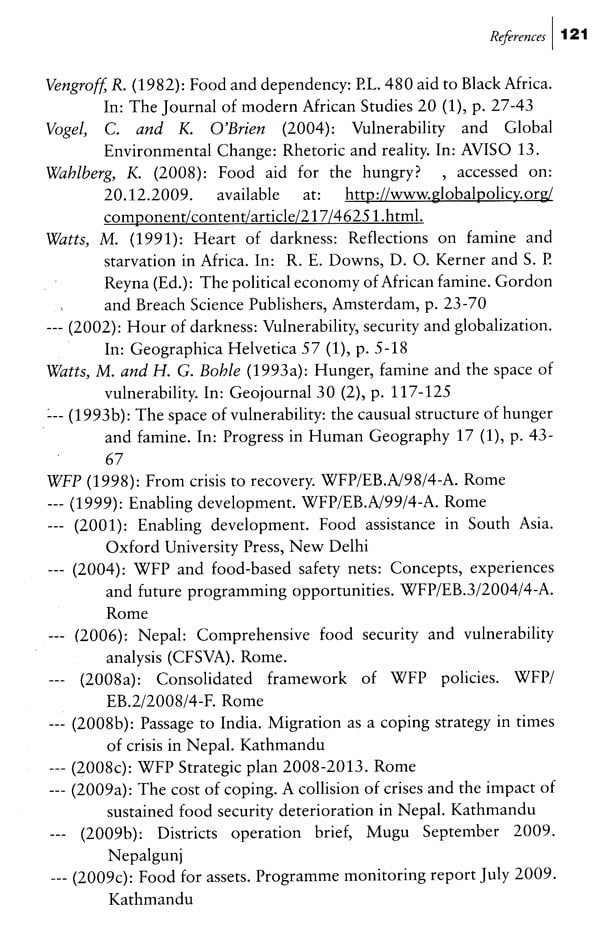
Assessing "Dependency"- Food Security and the Impact of Food Aid on Livelihoods in Mugu
Book Specification
| Item Code: | AZG919 |
| Author: | Miriam Bishokarma |
| Publisher: | VAJRA PUBLICATIONS, NEPAL |
| Language: | ENGLISH |
| Edition: | 2012 |
| ISBN: | 9789937506717 |
| Pages: | 160 (Throughout Color and B/w Illustrations) |
| Cover: | PAPERBACK |
| Other Details | 8.50x5.50 inch |
| Weight | 220 gm |
Book Description
In this book, Miriam Bishokarma, a young geographer from Bonn University (now Zurich), has looked at the vulnerable livelihoods of high mountain farmers in the far West of Nepal. She has put her focus on the food security of village populations. Her research demonstrates the everyday food crises which these people face. They depend on the external supply of food, including provisions of the World Food Programme.
Miriam Bishokarma's central question is to what extent these farmers have become dependent on external supplies of food, and how geographers can disentangle the complex structures and processes that determine the state of food dependency. The reader is taken to a remote village in the mid Western mountains of Nepal, where the author has done in-depth field work. She concludes that the people of Ruga village depend on various sources of food, including outside supply by the World Food Programme. However, this food dependency has not destroyed the basic livelihood structures on which the village people base their livelihoods.
Yet, this perception prevails newspaper articles the capital, often by persons, who only spend little time the regions they are writing about, such Mugu. The prevailing discourse blames food aid agencies such the WFP for changing recipients' habits, thereby preventing them from growing traditional such millet.
**Contents and Sample Pages**
